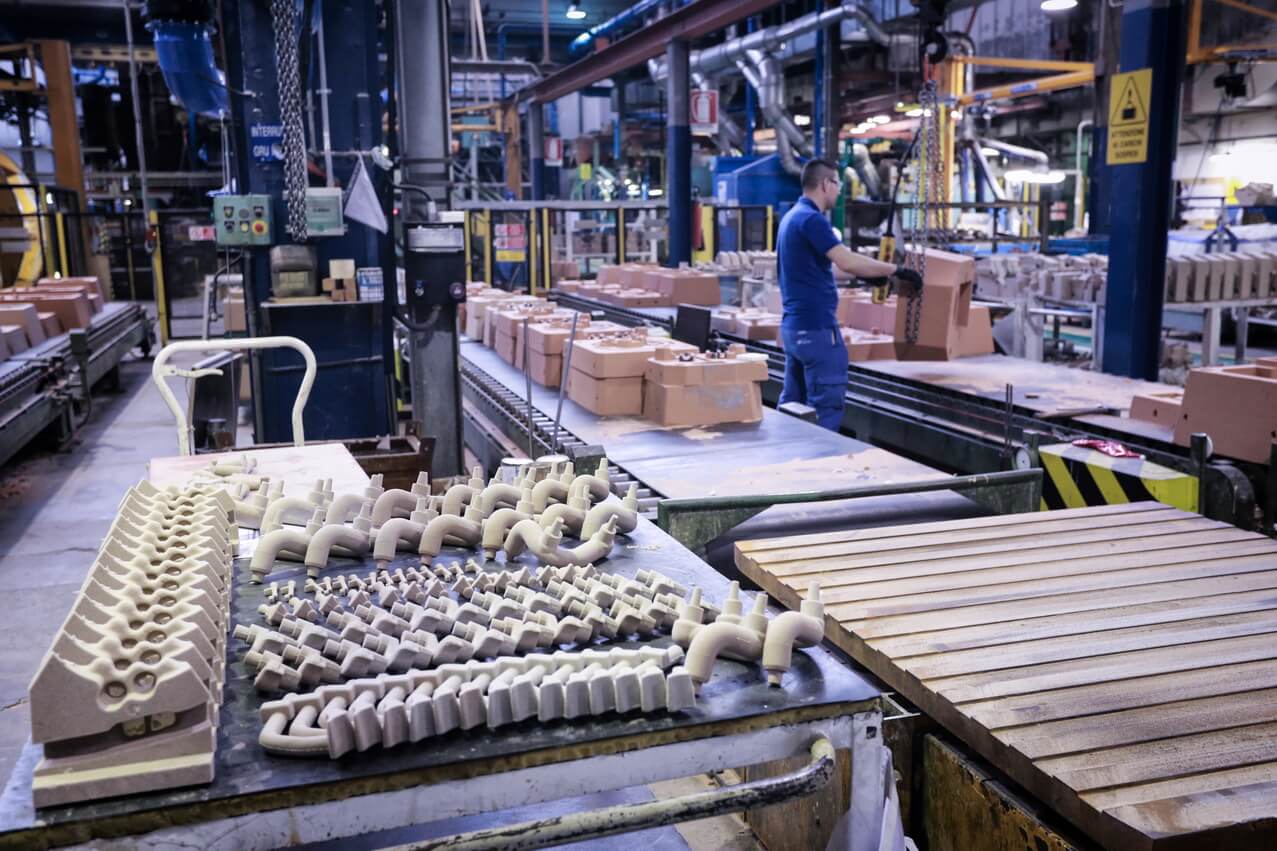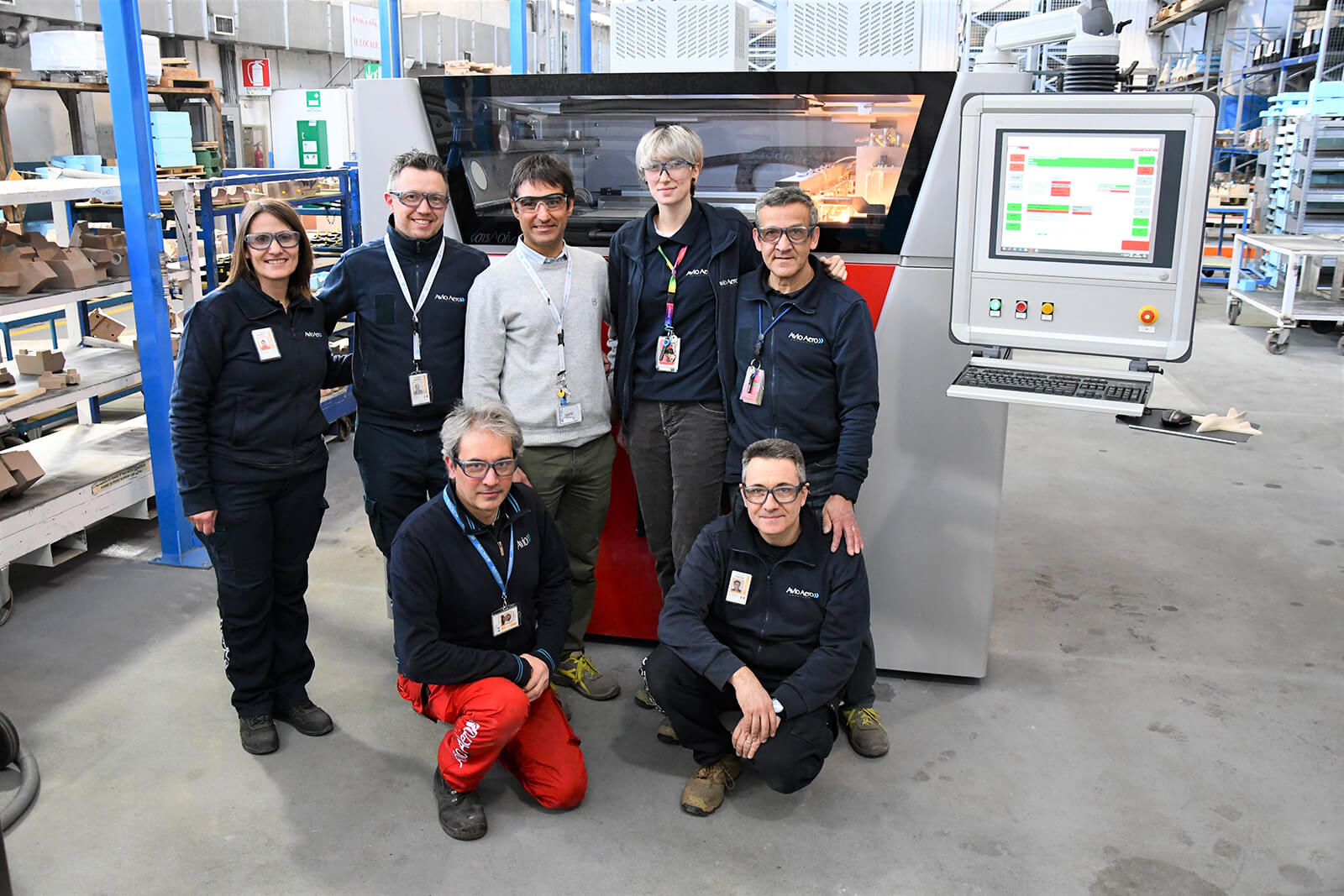Invent
Borgaretto goes 3D
Industrial processes existing since almost a century, restructured and renewed thanks to technology that improves results and sustainability: just like the 3D-printed sand cores.
Feb 2020
As the readers of our magazine about know: we have always loved stories of innovation and technology! Especially when our stories tell about inventions and new activities for aircraft engines and components that we have been designing and manufacturing in our plants for over 112 years.
In particular, the Borgaretto foundry - located on the outskirts of Turin and capable of achieving incredible commercial results in 2019 (new orders worth over 10 million euros) - has been performing one of the most fascinating industrial processes for decades and has even defined it in technical jargon: the production of sand cores.
The castings made at the Borgaretto factory represent the industrial process used to build the housings (casings or containers) of accessory drive trains or power transmissions for aircraft engines or helicopters. These are made from magnesium and aluminum or other alloys, which are extremely solid and resistant. Often the cases are very large and heavy (such as, for example, those for the TP400 and GE9X engines). Basically, cores are the molds into which molten metal is poured to give shape and substance to casings.
The traditional method to form a core uses sand and additives placed in a special container. In the industry sector, the container is called a core case. The latter has the exact geometric shape of the parts of the piece that are to remain hollow. While this industrial process has existed since the dawn of industry, the modern Manufacturing team in Borgaretto has introduced an important technological innovation: a machine to 3D print cores with a more complex geometry.
"Basically," explains Mario Armando Ravaioli, Head of Technology and Manufacturing Engineering at Bortgaretto, "this is an actual 3D printer that allows us to make the sand cores; that is, the internal geometries of our mechanical transmissions. It works almost like the Arcam and Concept Laser additive machines - installed at our sites in Cameri, Brindisi and TAL at the Politecnico di Torino - but with characteristics that differentiate it from 3D metal printing using Electron Beam Melting and Direct Metal Laser Melting technologies."
"On our machine, printing starts with a drawing specially created for 3D sand printing, ‘sliced' and reduced to very thin layers. The machine then spreads a very thin layer of ceramic sand inside (with specific characteristics, "better" than the siliceous sand) and a mobile head draws on the freshly spread sand, impregnating it with a special stiffening resin. At the same time, a lamp passes over the thin layer of sand heating it, speeding up the stiffening process. The cycle then starts from the beginning again and the core is built, layer upon layer."
"It is an actual 3D printer that allows us to print sand cores, with the internal geometries of our mechanical transmissions for example, unleashing our designers freedom and imagination"
This process - called "binder jetting" by experts - is rather lean and fast. Among other things, it allows for the complete reuse of sand which is not affected by curing resins. Furthermore, 3D printing makes it possible to create innovative, unconventional geometries that give our engineers great freedom of imagination and the ability to apply "design for additive"... for instances, the ad hoc design of components molded with Additive technology.
"We've known about 3D sand printing for a long time," notes Jenny Mauguen, Process Engineer, "ever since hot lasers were used, and pre-mixed sands with a lot of glue and resins were used. On the other hand, the machine we have today incorporates all the technical innovations of the last 10 years, allowing us to be more environmentally friendly, and to produce complex components that can be easily inspected and immediately used for casting. We made a wise choice, that offers an appropriate compromise between technology, environment and safety," concludes Jenny.
This technology, and its ability to mold (and print) any shape and geometry, has been a turning point for Borgaretto plant, where complex shapes are very often made. "I love technology and innovation," concludes Mario. "But it must provide advantages and competitive costs... it would make no sense to 3D print elements that are easy to make using traditional technology. Just as for metal additive manufacturing, we are not considering of replacing all core production with additive manufacturing today; we only adopt the additive principle for the most complex parts, those for which we obtain the most significant advantages."
In Borgaretto, technological innovation does not stop with 3D printing: in recent years, technological innovation and improvement have continued to multiply which allow working faster, more efficiently and allow achieving results that were once inconceivable. Borgaretto is building the foundry of the future.









